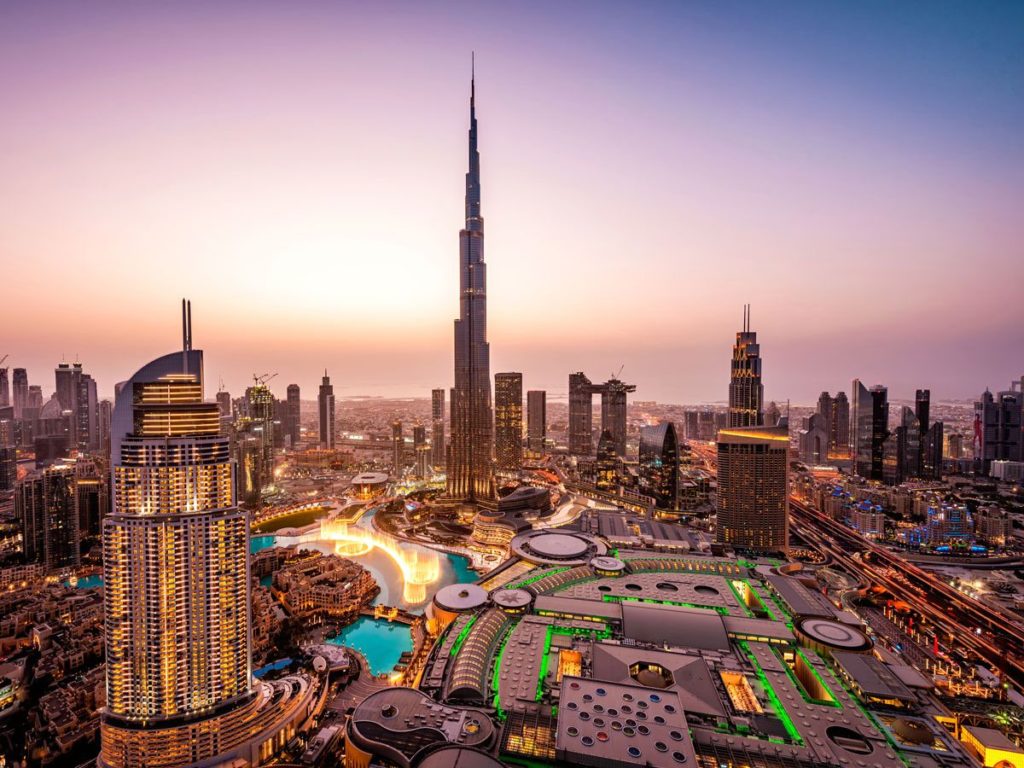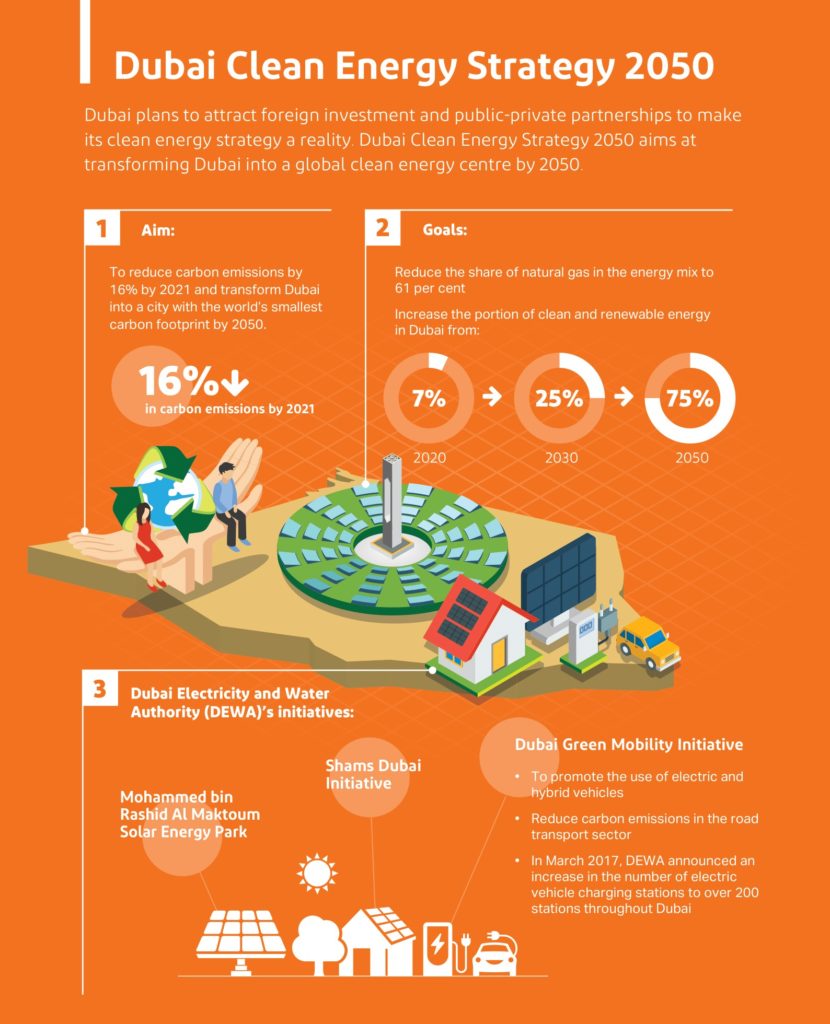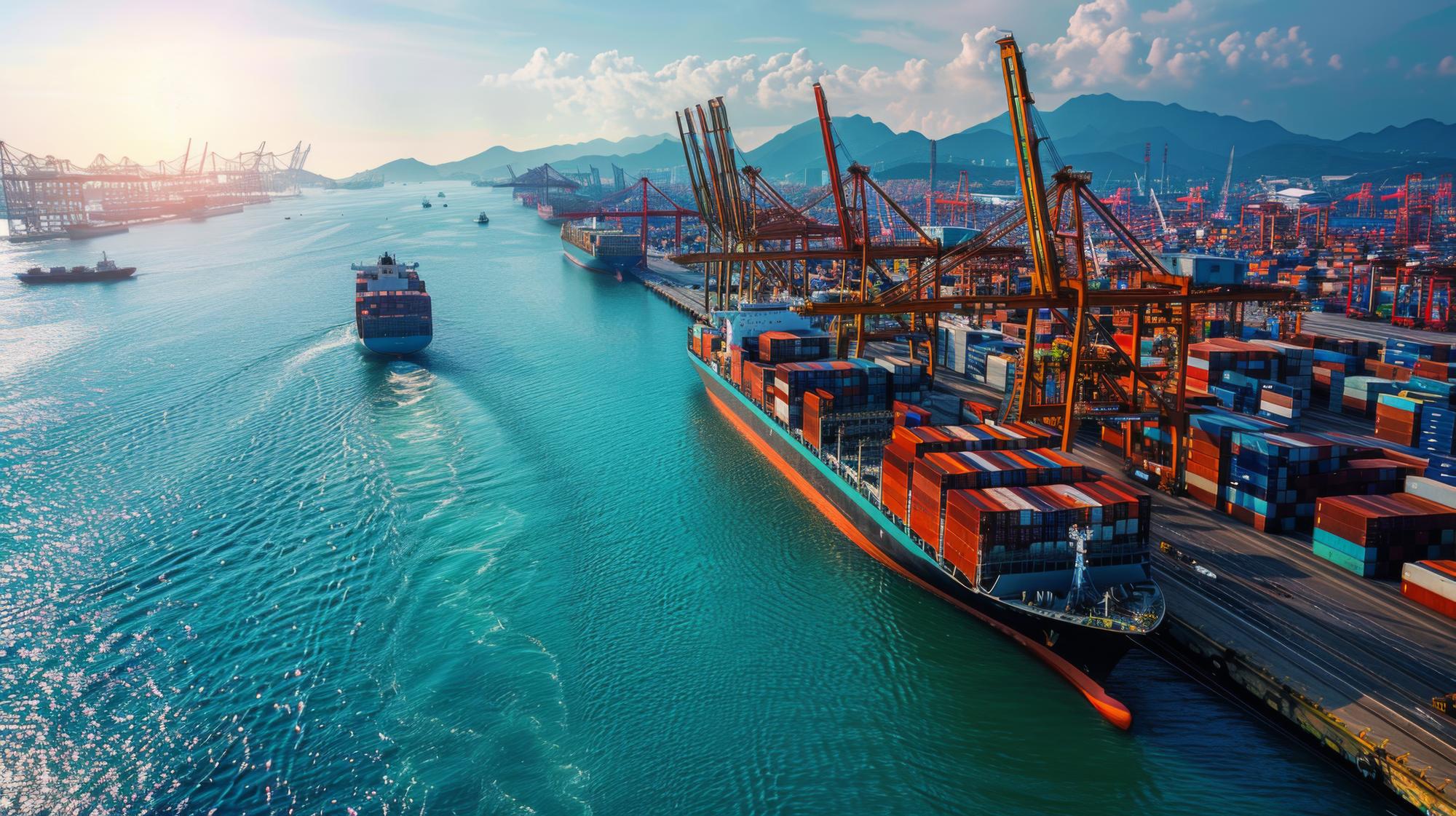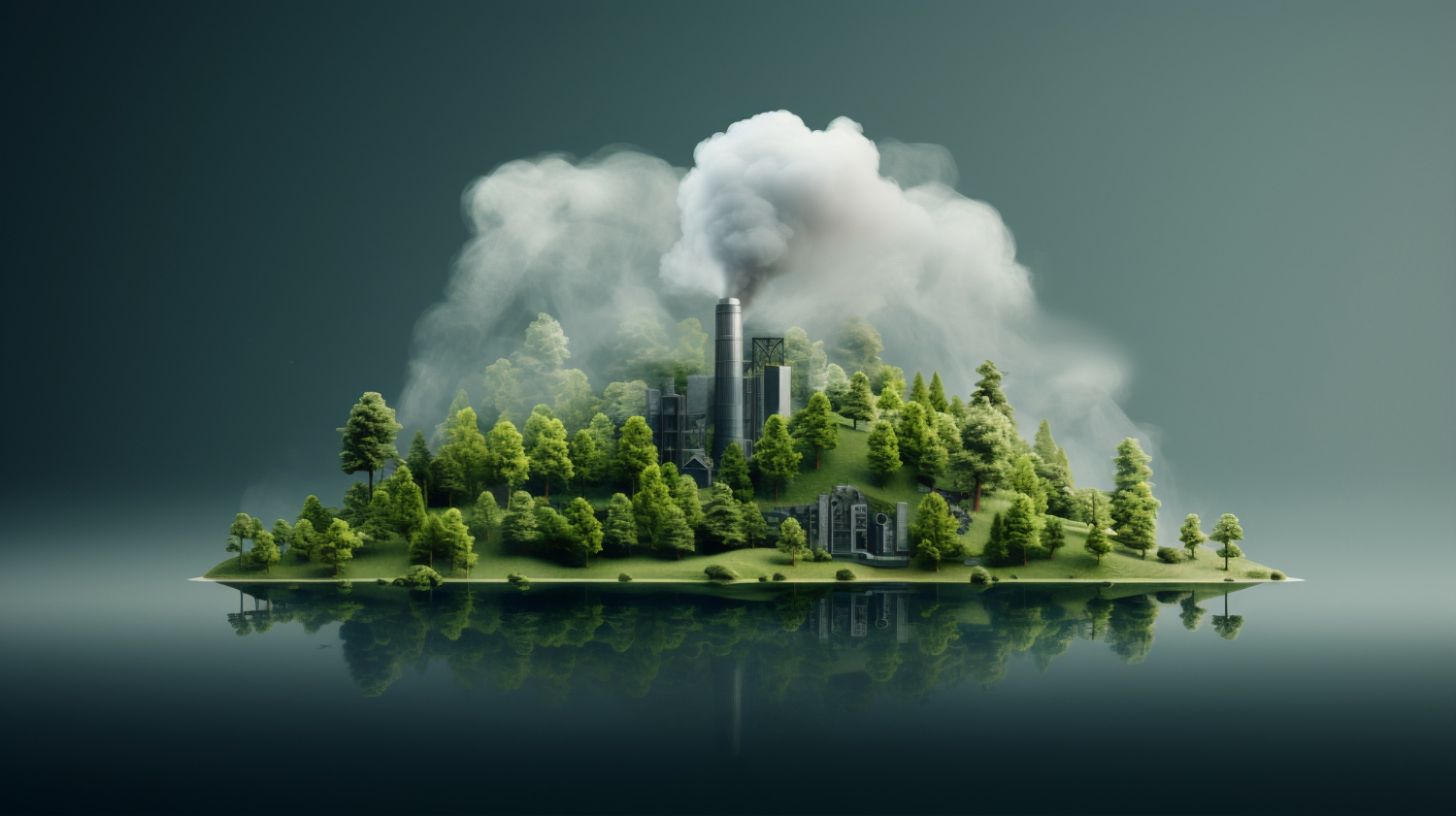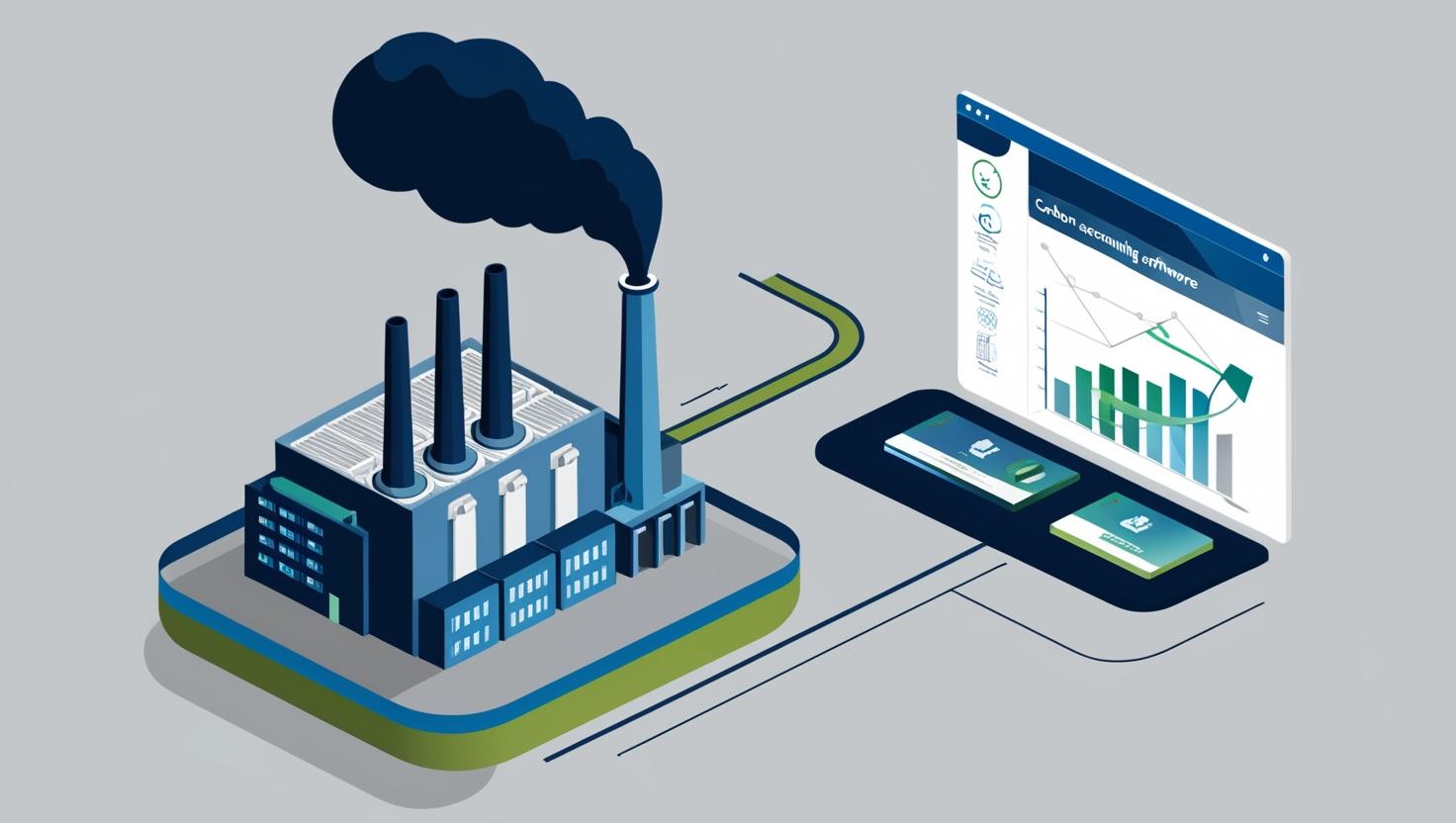In November 2015, Sheikh Mohammed bin Rashid Al Maktoum, Vice President and Prime Minister of UAE and also the ruler of Dubai, launched the Dubai Clean Energy Strategy program.
Climate change is a serious concern. The earth’s temperature has increased by 2 degrees Fahrenheit in the 20th century alone. This situation demands attention because if you take a look at the history of the earth’s temperature, it has remained fairly constant for a long period of time. In fact, in the last ice age when the earth was covered by 3000 feet of ice in the North-East of the US, its temperature was just (5-9) Degrees Fahrenheit below than now.
So, even the slightest change in global temperature can have an adverse impact on the earth’s environment and its habitat. Frequent wildfires, droughts, and storm events are some of the effects of global warming and the shift in the earth’s weather patterns.
Fortunately, many countries now are taking this seriously and taking steps to combat the issue. You might be knowing Denmark for its renewable energy sources where 80% of the country’s electricity is generated using renewables, 57% coming from Wind Power alone. Similar is with Norway where 99% of its electricity production comes from hydropower.
In that League of Green Nations, Dubai, which is the most populous city in the UAE region, also famous for its luxurious lifestyle and the tallest skyscraper in the world Burj Khalifa, has joined the list.
These remarkable words of His Highness Sheikh Mohammad bin Rashid Al Maktoum summarize the whole strategy and his vision for Dubai.
“The strategy aims to provide 75 percent of the emirate’s energy through clean energy sources by 2050, reflecting our commitment to establish a sustainable model in energy conservation that can be exported to the whole world, and support economic growth without damaging the environment and natural resources.”
Sheikh Mohammed
“Our goal is to become the city with the smallest carbon footprint in the world by 2050.”
Sheikh Mohammed
Furthermore, Dubai’s population is expected to reach 5 million by 2030, which is also posing a future challenge to meet demands for energy and other utility for the authorities. But UAE authorities, with their meticulous planning, steps, and vision, seem ahead of the time.
What is Dubai’s Dubai Clean Energy Strategy 2050?
The Dubai Clean Energy Strategy 2050 is not only ambitious but also a green energy program that aims to make Dubai city capable of fulfilling 75% of its energy demands from clean energy sources by 2050.
In fact, the strategy lays down a complete road-map for its clean energy goal. This goes as to meet
-7% of the total energy need from clean sources by 2020,
-25% by 2030, and
-75% by 2050.
Started back in November 2015, it has a goal of setting Dubai as an example of sustainability for the whole world and the upcoming generations.
Aligning itself with the visions of United Nations Sustainable Development Goals 2030, the strategy demands to adopt the latest technologies and innovations to tackle climate change due to global warming and its effects. For that, the UAE has allocated a budget of 600 Billion AED to accomplish the project by 2050.
5 Pillars of Dubai Clean Energy Strategy 2050
Now, talking about the details of strategy, it constitutes 5 main pillars in it-
Infrastructure
The infrastructure part of this strategy includes energy capacity annexation of one of its kind, the Mohammed bin Rashid Al Maktoum Solar Park.
The Mohammed bin Rashid bin Al Maktoum Solar Park is the world’s largest solar energy farm as of today. This was inaugurated back in 2013 with a small capacity of 13MW, i.e before the Dubai Clean Energy Strategy 2050.
The solar park program in continuation assimilated itself with the Clean Energy Strategy 2050 and achieved 800MW capacity in 2017 in its 2nd phase.
At the end of 2020, the Dubai Electricity and Water Authority(DEWA) also announced the completion of the 3rd phase of this solar program achieving now 1013MW of energy production. This was constructed at a cost of AED 3.47 Billion and is energy to meet the energy demands of Dubai’s more than 2.4 lakhs residents.
Now, the 4th phase has an aim to produce 25% of Dubai’s total energy production which is around 5000MW and is planned to achieve by 2030.
An additional AED 500 Million is allocated to smart grid development for efficient management of energy usages.
Apart from the solar energy park, the infra planning also includes the establishment of Research & Development centers for innovations in solar energy production technology, 3-D printing, robots and drone developments, desalination of water using solar energy, and many others.
An interesting part here is that the construction of these establishments is planned to achieve by 3-D printing technology itself.
Also, another plan is to create a dedicated carbon-free zone, by the name Dubai Green Zone to attract investment and international firms to establish their R&D centers for further advancements & innovations in green energy technology.
Legislation
An enormous, long-going & ambitious project like this which is one of its own kind is inevitable to fail without a proper legislative structure.
So, the 2nd pillar of Dubai Clean Energy Strategy 2050 comprises the implementation of its legislative structure in 2 phases.
The 1st phase of the program aims at encouraging all the building owners to install solar panels on their buildings to generate electricity and connect it to Dubai Electricity & Water Authority’s(DEWA) grid to supply the surplus amount. This strategy also comes under the DEWA’s initiative and is named Shams Dubai.
The 2nd phase plans to incorporate Dubai’s municipality also to regulate strategies for efficient energy management and installation of PV panels to all the city’s buildings by 2030.
Funding
As the green project also requires green funding for its operation, the UAE authorities have also established a fund body under the name Dubai Green Fund which has a worth of AED 100 billion.
The Dubai Green Fund aims to provide easy loans for stakeholders interested in investing in clean energy initiatives and financial aid to the research & development programs.
Human Resouces and Skills
Any technological innovative task requires consistent efforts and competitive skills. So, the 4th pillar of this strategy ensures skill building of people involved through various global training programs and institutes.
It involves reputed organizations of the world that are dedicated to sustainability research programs, like the International Renewable Energy Agency(Irena) to create specialized human capabilities in this field.
Sustainable Energy Mix
The 5th and final pillar of the Dubai Clean Energy Strategy aim to create a sustainable energy mix comprising, 25% of energy production by solar power, 7% of energy through nuclear power, 7% energy through green coal, and the remaining 61% through gas by 2030.
By 2050, the aim extends to create an energy mix with 75% of Dubai’s total energy production through solar power, which is the ultimate goal of the strategy.

